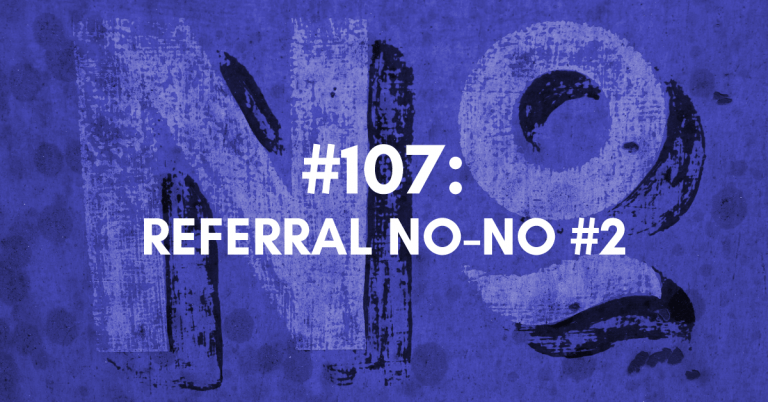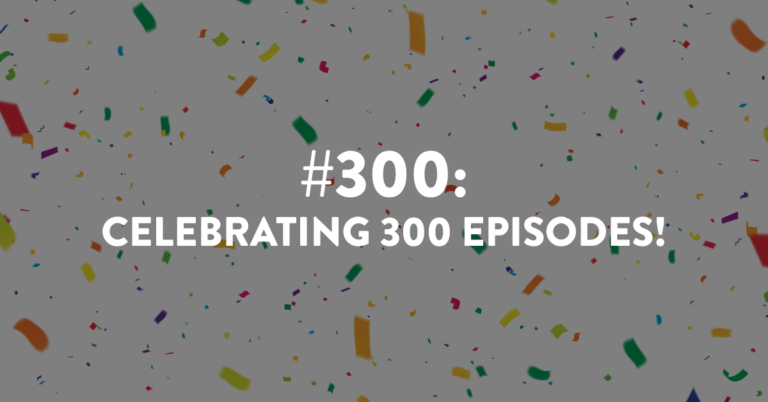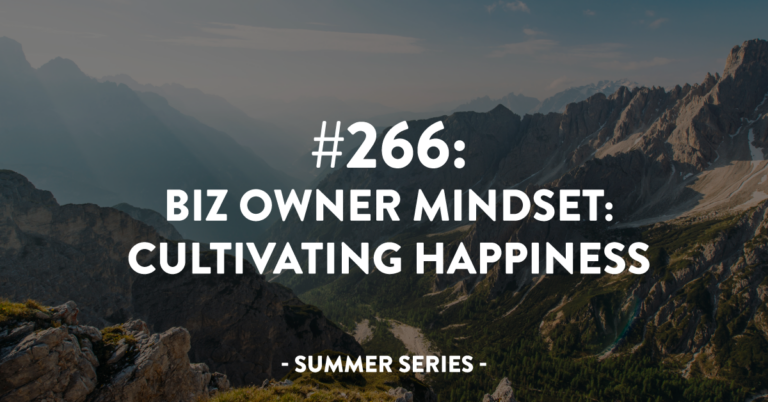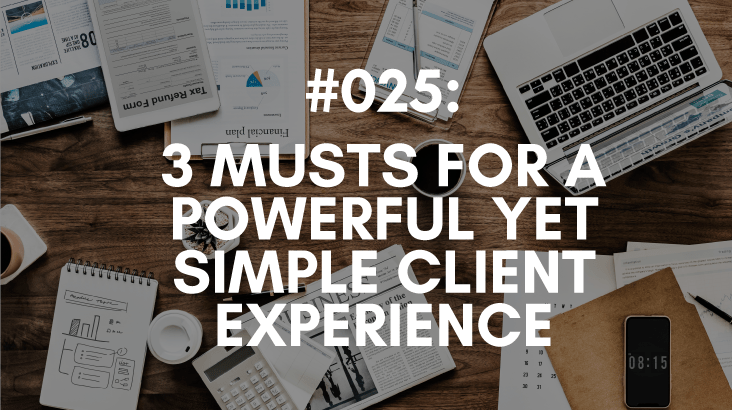Ep #307: Questions You Should Be Asking
Building a referable business requires strategic planning and thoughtful execution of touchpoints with referral sources. In this episode, I reveal some of the insightful questions my clients have asked during our coaching sessions.
Here are three key takeaways from this episode:
Handwritten Touchpoints: One of the questions that frequently arises is whether all touchpoints need to be handwritten. While the answer may surprise you, it’s crucial to understand the specific instances where handwritten notes are essential in cultivating referral relationships.
Planting Referral Seeds: We explored how to strategically weave referral seeds into various communication channels, such as magazines, welcome boxes, and employee announcements. By customizing your messaging and planting referral seeds effectively, you can nurture a referral mindset in your network.
Differentiating Follow-Up: The episode highlighted the importance of tailoring follow-up strategies based on the type of referral received. Whether it’s a potential client or a referral source, understanding how to approach each interaction can significantly impact your referral success.
Learn from real-life examples of business owners who have quadrupled their referrals in just one year by implementing our proven strategies. Don’t miss out on the valuable insights shared in this episode. You too can take control of your referrals and build a thriving business.
And if you’re ready to supercharge your referral business, don’t miss out on our upcoming live training in May. Head over to StaceyBrownRandall.com/referable to apply and secure your spot for this exclusive event.
Links Mentioned During the Episode:
Download the 30 Ways to Take Control of Your Referrals and keep it handy as you build the right foundation for more referrals!
Learn how to work with me inside my Building a Referable Business™ coaching program. Check out the program and then apply to see if you’re a fit.
Want me to build your Referral Strategy for you? Then check out my VIP Referrals In A Day service where I handle the heavy lifting for you. First step is to apply to see if you’re a fit and then we’ll schedule a call. (*A minimum of a 2-person team is required for this Done-For-You service.)
Next Episode:
Next episode is #308, which is another episode created with you and your needs in mind.
Download The Full Episode Transcript
Read the Transcript Below:
Stacey Brown Randall: Have you ever wondered the types of questions a business owner asks when they’re working on building their referable business? Let’s find out.
Hey there and welcome to episode 307 of the Roadmap to Referrals podcast, a show about helping you build a referable business. I’m your host, Stacey Brown Randall. My journey from business failure to a successful business now more than 10 years in, I know, generating referrals naturally and consistently has made all the difference. Working with clients around the world, we leverage the science of referrals, protect relationships above all else, and help you build a referral business.
If you have ever wanted to join me for a live training to learn my three-part framework on why my clients double, triple, or quadruple their referrals in sometimes as little as 90 days, plus work with me to calculate what’s possible for you for a referral explosion in one year, then you need to join me for my live upcoming training that’s happening in May.
Go to StaceyBrownRandall.com/referable for all the details and to submit your application. If you’re accepted, you’ll receive an email with all of the training details so you can join me live and we can work through what is a true reality for referrals in your business.
Have you ever wondered the types of questions a business owner asks when they’re working on building their referable business?
So from time to time, I will get asked by people who were not in my coaching program, so who were not in the Building a Referable Business coaching program, what we talk about and what kind of questions are asked by my clients, since with my clients, I do a weekly question and answer session.
So I thought, OK, I could certainly share that. I could certainly share what are some of the questions that my clients are asking on a week-to-week basis as they are working through the different trainings and strategies and adding more tools to their toolbox, as they work to increase their referrals, whether that’s double, triple, or quadruple what they’re used to receiving, and of course, make their way towards building a beautiful, referable business.
So this will be a shorter episode because I just want to hit the highlights of a few of the types of questions that I’m asked. And for some of them, I’ll give a little context, so they actually make sense.
Now, just to note, I’m just sharing the questions that are asked, not necessarily my answers. In some cases, the answers are very, very specific to the question that was asked. And so I want to talk about that in terms of the question, like who asked it and why. And I don’t mean who as in their name, I just mean in what they do, but the reason behind that question.
I think the context behind a question is sometimes just as valuable as knowing what the question is. But of course, the answers to these questions, well, those are reserved for my clients, for the answers that I gave them during a Q&A.
But I wanted to share with you the things that you could be and probably should be thinking about if you’re really deciding that 2024, or I guess at any point in the future, you’re going to get serious about building a referable business.
Okay, so the first one that I got, when I was looking through some of these questions, the first one that I wrote down is a consultant asked about handwriting. As you can imagine, I get this question a lot.
But specifically, once you’re in my program and you start looking at the different strategies that we put into place and you start looking at the ways that you’re going to cultivate your existing referral sources, people who already refer you, and then also how you’re going to cultivate your potential referral sources, those people who aren’t referring you yet.
And then maybe you also go through the Referable Client Experience program, and you look at the plan and the processes that you pull out of that. There’s usually a question that will come up in someone’s first year where they will ask, are all of these touch points being handwritten?
And the reason that question is usually asked is because most people spend a little bit of time checking me out before they make the decision to join. So they listen to my podcast, they read my book, they’re on my email list, they read my weekly emails, and eventually you hear this drumbeat of handwritten, handwritten, handwritten, right?
But I don’t actually mean everything has to be handwritten, once you’re actually putting all the touch points and all of the pieces in place. But it can be confusing for somebody. They’re like, oh my gosh, do I have to handwrite every single thing I’m doing? What if I have 52 referral sources or even 21 referral sources? Like that’s a lot of handwriting.
So I always clear that up for them. They’re always breathing a sigh of relief. I do say there’s a few times, there’s actually three in particular, where I believe that a note must be handwritten. It could be for depending on some of the strategies that maybe you’re putting into place.
But when it comes to taking care of our existing referral sources and you’re going to do five to six maybe seven touch points in a year, the very first question you’re going to hear someone say is are all those handwritten? And I always say no. There’s three times where they have to be handwritten but within their plan there’s only two, so that’s usually pretty helpful for them.
Okay the next question came from an interior designer, and they were wondering how to weave in referral seeds with a magazine that they are sending to potential referral sources and other people within their database.
If there’s one thing my clients get really clear on really quickly in the program is that there are typically places hiding or opportunities hiding in your business where you could be planting referral seeds and looking to build that mindset in other people to think about referring you. And doing it in a way that feels very natural and normal and not sleazy and not pushy and just dropping it in.
But it’s the consistency and repetitiveness of what we do and how we do it, meaning not the same way every time, that allows that language to work. And so very quickly, I find once people have been in the program for a couple of months and they’re participating in these Q&As and they’re hearing other people ask questions about, hey, I’m rolling out a new website. What should I be thinking about?
I am always one that says, I want to be a part of those things with you. When you have something different going on in your business that’s outside maybe the strategy I’m teaching you, you got to tell me about it because I want to participate with you. And I want to give you feedback and thoughts and advice and write down the exact language that I would have you include in those moments.
So in this case, this interior designer very early on was like, I get it. I get it. Yes, I’m learning all these strategies and these plans and these processes and these scripts that I’m putting in place for how things are operating in my business. But I’m also working with them to have them evolve how they see other opportunities within their business.
So when they bring one to me, I know, oh, light bulb moment. They have arrived. We are there. And in this case, this interior designer is like, wait, we’re sending a magazine out. What should we be doing about it? What should we be saying that plants referral seed language?
So the first thing I did have her look at is, well, I want you to think about sending this magazine out, obviously she was planning on sending like a letter with the magazine. So that’s why we had the space to do referral seed language and we needed language for that.
First thing I told her is, do not send out one form email or one form letter with that magazine to everybody. We’re going to actually group these folks by categories. So her question was really like, OK, so what is it going to say to the potential referral sources versus what it would say to clients versus what it would probably say to existing referral sources?
The language is different. The letter is pretty much all the same. And there’s usually like a paragraph or a sentence or two that I commandeer, so to speak. And I change that based on the audience of who we’re talking to. So that was just another question that was asked that we got to dig in and I got to answer so she could really leverage that opportunity.
I’m like, if you’re going to spend the time and energy to send out a magazine, like lots of copies to a whole bunch of people, let’s make it worth it, right? Like, let’s plan a referral seed if we can. Doesn’t mean every time we can, but if we can, you know, I want to take, I definitely want to leverage that, definitely want to take advantage of that because it’s an opportunity I don’t want anyone to waste.
Okay, so here’s another question that was asked. It was by an attorney. And this attorney happens to be working through one of my training programs called the Referable Client Experience.
Now, you probably haven’t heard me talk about that one too much because, well, if you’re not in the coaching program or working with me at the VIP level, it’s not available to you. So I don’t talk about it too terribly much, because if you want to go through it, well, it’s behind a paywall.
Now, I do have a podcast series out a couple of years ago that I did on the Referable Client Experience, and book number two is actually going to be on that topic as well. So I’ll probably be talking about it more on the podcast as we gear up for the launch of that book, because I’ll have something else that you can go and access that isn’t like joining one of my programs. It’ll be much more affordable.
So I don’t always talk about the Referable Client Experience outside of the couple of times I’ve done it, like a series on the podcast or mentioned it here or there, just because unless you’re in the coaching program or the VIP, you can’t access it. And I get sometimes that like, hey, when I can’t access that, it’s a little agitating to always be listening to someone talk about it. So I try not to talk about it that much.
But in this case, this attorney who is working through the Referable Client Experience Program and training wanted help on her welcome box and the card. Now, you’re hearing me say this. Let me put this in context. Do you need a welcome box? Probably not. You do not have to do a gift. You probably should do a card.
But the idea there is that it’s where it fits in based on the strategy and the process that she’s learning through my program. So when you hear me say things, don’t just be like, ah, I need a welcome box and a welcome card, like if you don’t have context probably for where it should go in your business.
But here’s the thing. This attorney is a divorce attorney. So what we were paying attention to is being highly, highly sensitive to what was in that box, what would be written in that card, what that would ultimately look like for this attorney as she was building out her referable client experience, which is one of the foundational strategies.
There are three. This is one of them. You hear me talk about the other two, growth by referrals and referring machines, all the time. But it’s just one. And we’re just building that, in this case, a referable client experience. And so everything about that had to be done not only correctly, because it needs to be done correctly for any business, but with sensitivity because a divorce attorney. So that kind of put some things into context for you.
Another one, actually, this isn’t a question, but I have a CPA who actually did his very first event, and it’s not something he usually does. And you don’t have to do events. Please hear me say this. You don’t have to do events. I have some people who never do them, and that’s awesome. I have some people who like to do them.
But he’d never done an event before. He certainly had never done a virtual event before. But there’s a training we have in the coaching program. It’s how to extend the referral ROI on your events.
And one of the things I talk about, well, that training talks about the five times or the five areas before, during, and after your event where you should be leveraging referrals and referral seed language.
And in that training, I talk about you don’t have to do an in-person event. I mean, what do you do if all your referral sources are not local? You’re certainly not doing a local in-person event. So I teach a lot in that training about virtual events, which I do a lot. And I’ve had people doing a lot for many, many years.
And so he did his first one. And so I had him come on and share how it went, his first virtual event for his referral sources. And again, you do not have to do an event, but it’s always nice for the folks in the coaching program to hear, in this case from the CPA who did it and how it went and what lessons they learned. And then, of course, to talk about their overall opinions and feedback on it, too.
So and then, of course, anything that percolated from that as well from a referral perspective. So it’s also fun to have people share. what they’re doing as well and the results that they are having. Okay, here, I’ve got a few more for you, but hang on, we’ve got to do the PTI.
Stacey Brown Randall: Hey there, pardon the interruption. Have you ever wondered how a current member of my Building a Referable Business Coaching program would describe their experience? Well, I wanted to know, so I asked them, and here’s what they had to say.
Client: If I had to describe BRB in one word, it would be transformative. It really changes the way that you look at your interactions with the people who can provide business for you.
Client: I would define BRB in one word as a community. It’s always a positive experience. She’s extremely, well, she’s very organized. She makes everything seem easy, even when it’s not actually easy. And she’s extremely motivating.
Client: Defining BRB in one word would be relationships.
Client: BRB, in one word, effective. If you’re looking for an effective program, BRB is it. If you’re looking for a great, knowledgeable expert and cheerleader, then Stacey’s definitely the person to work with.
Client: If I could define BRB in one word, it would be elevate, because it’s certainly elevated my business.
Client: BRB means progress to me. What I would say to someone, the reason to join BRB, is if you’re in a business that’s a referral business, and that’s the most important piece of your business, then I can’t think of a better way to invest in it than invested it in the best authority when it comes to referral business. Stacey.
Stacey Brown Randall: Want to join us inside the coaching program, Building a Referable Business, or BRB for short? Go to StaceyBrownRandall.com/referable to learn about the program and click on the link to submit your application.
We also have a live training coming up in May where you can learn more about this program, plus how I get my clients the success that they receive. You can join me for that training live in May. But first you have to apply to one, be accepted and two, get information on the trainings. All right, now back to the episode.
Stacey Brown Randall: Okay, so here are a few more. So I had a financial advisor ask about removing a referral source that didn’t fit the niche. So in this case, like, you know, you always hear business advisors like, you should have a niche, you should have a niche, and I actually do agree with that. I do not think, you know, somebody who can help everyone helps no one.
Like, I don’t even know, like, how to think about you, if you can help everyone and anyone do a whole, like, a thousand things, right? But I don’t think everybody has to niche down to the point where you are teeny tiny focused either.
For me in particular, my niche is really actually on my subject matter expertise, though I am very clear about who I help and who I don’t help. I don’t work with online course creators. I don’t work with e-commerce. I don’t work with SaaS-based programs. I don’t work with medical. I don’t work with hospitality. I don’t work with retail.
Now, you hear that, and you’re like, that’s a bunch. That’s not even all of them. But that’s a bunch that I don’t work with. But then there are others that I could work with, but I also specialize in a few areas. But I don’t just do this for, say, attorneys, or just do this for interior designers, or just do this referral piece for business consultants.
I actually can help a number of folks, and I do, but my niche area of focus for me is in my expertise. But sometimes people have built a business, and I’m slightly in awe of them, where they’re like, this is what I do, and this is who I do it for, and it’s like a singular subject.
So in this case, for this financial advisor, built one of those businesses that I’m in awe of. And I’m like, wow. And so has a referral source that refers from time to time and is just trying to figure out should they be cultivating more referrals from this referral source that when this referral source refers, it’s not in their niche and they usually can’t take the client.
So what do they do, right? Should they remove them? And there’s a whole process behind how we do that and how we do that correctly. And so that’s what we were going to talk about when that financial advisor asked the question.
Okay, next up we have a consultant. Next question came from a consultant that was asking, hey, I’ve got a new employee starting, and how do I announce that? Like, can I announce that? Can we plant referral seeds?
Now, here’s the thing. Most of my clients, this goes back to the interior designer thing that I said earlier, too, when they were asking about how to put this referral seed language into a magazine that they’re sending out. And some other times I have this.
When there are big things that happen in your business, I always tell my clients, you got to let me be a part of it. I will tell you if there’s not a time and space or place for referral seeds. But if there is, I want to be a part of it.
And so this one’s like, hey, we have a new employee coming on board. And I’m like, I want to be a part of that. You got to let me be a part of the messaging, of the communication, of what you’re going to send out.
And again, just like we did before, I said, OK, there’s groups of people, categories of people who are receiving this announcement. We’re going to tailor each one to that group. But when I say tailor, I mean like we changed two or three words. It was the same letter, we just changed a couple words, and we planned referral seats in the process.
So, okay, here’s another question that was asked one time. It was from an attorney who was doing video interviews, and he wanted to know what he could do with those video interviews to plan referral seats. So of course, you know, my question is context, please. Who are we interviewing? Why are we doing this? Who will see it? What is the purpose?
I need the context, right, for me to be able to answer the question. I don’t know. I don’t know if you can plant referral seeds in your video interviews. I got to know what you’re doing first. So that was a really fun question that to answer as well.
And then here is another question we got that came from a business coach and they were curious what is different in my follow up when I’m referred to someone who can actually be a referral source to me versus being referred to a client.
So something that people overlook is that sometimes when someone refers someone to you it’s not that they’re referring a client because maybe they can’t or they just haven’t yet. But they are well-connected, and they do know other people. And they think, oh, you should meet this other person. And the person they refer you to, that person has the potential to refer clients to you.
So this business coach’s first time she’d experienced that, she was like, what do I do? And I was like, oh, you know, I got an answer. I always got an answer. Here’s the game plan. Here’s the roadmap.
But yes, we do have different follow-up when we’re referred to someone who has the potential to refer us clients versus becoming a client themselves. So that’s just some of the questions that I get asked on a weekly basis when I am working with my members inside my coaching program, Building a Referable Business.
We do other stuff too. We review their touchpoint plans, whether that’s when they’re doing existing referral sources or potential referral sources. We also review what they’re building with any of the trainings they go through with their virtual events.
We’re looking at it from their referable client experience. We’re looking at what they’re going to do with their testimonials made easy. We look at anything anyone builds. We also do review and feedback, and I do that whenever someone submits something for me to review.
And then, of course, we have our members share their results as well, which is always so fun to hear people talk about. Listen to the quarter I just had. So you guys are hearing this episode at the end of April. You can imagine we had all a bunch of quarter one results come out and those are so fun to hear people talk about the success that they had.
We had somebody talk about in the first quarter of this year, they received almost as many referrals as they did in all of last year. In all of last year, that was like they quadrupled their referrals joining the program for the first time last year over what they typically receive.
They’re like, this is crazy. Like they typically average 20 referrals a year. That’s what they got in 2022. In 2023, they came into my BRB program and they got over 60, I think it was like 67 referrals in 2023. So they quadrupled that, right?
And then from there, they were like almost quadrupled that. I guess actually I just did the math in my head. And now they’re like, wait, we’re at over 50 in one quarter this year. I’m like, holy cow, you were just doing it, right? Like making it happen. When you get those processes in place, they’re fun. So of course, we talk about results too. Okay, so enough about that.
If you’re interested, the show notes page for this episode can be found at StaceyBrownRandall.com/307, which is where you will find the link to the resources mentioned in this episode. In particular, the live training I’m going to be doing in the middle of May, and you don’t want to miss it.
So make sure you go to StaceyBrownRandall.com/referable, complete the application. It’s where you’re going to learn more about the BRB coaching program. But if you’re accepted, it also gets you access to the training because the training is only for those that we feel that can have success inside BRB. You can join that training.
Of course, when you apply and when you apply to attend the training, there’s no obligation. You may decide at the end of that training, it’s not the right move for you. and that’s okay. We’d rather you know than wonder. So go to StaceyBrownRandall.com/307 to get all the information from the show notes page for this episode.
And we’re back with another great episode next week created with you and your needs in mind. Until then, you know what to do my friend, take control of your referrals and build a referable business. Bye for now.







